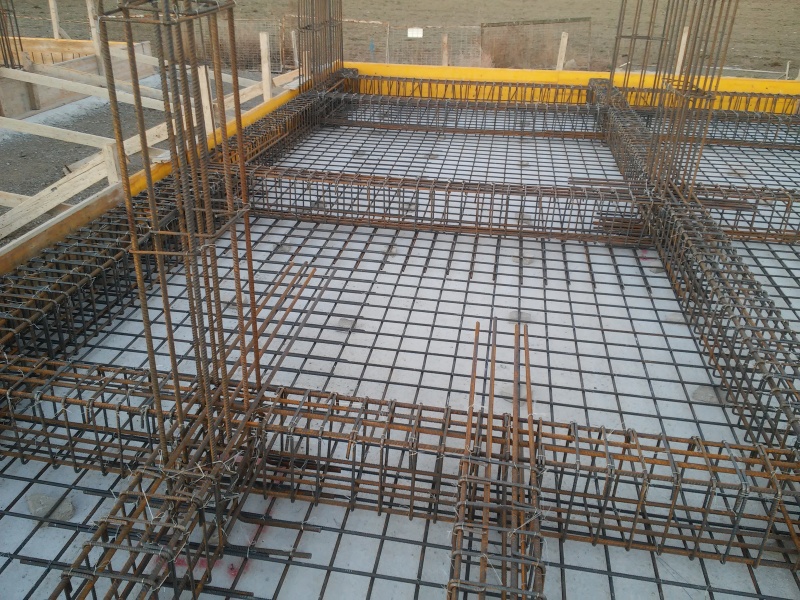kellez
Civil/Environmental
- Nov 5, 2011
- 276
Project:
I am designing the foundations of a 2 storey RC structure. The foundation i am using
is a monolithic slab (raft foundation 45cm thick), with foundation beams (45cm height) fully
embedded within the foundation slab, interconnecting all columns at the base. (see pictures)
First i want to design the foundation beams without the slab, and then i will also take that into consideration.
Modelling of Foundation Beams:
In order to model the foundation beams on elastic soil:
I have modified all fully fixed supports at the column bases -> By releasing all rotations and assigning a stiffness to the Z+ direction.
I have also added an elastic support to the foundation beams to simulate ground stiffness.
Problem
After i modified the supports all of my dead load cases and live load cases have now changed from linear static to nonlinear static analysis.
Now when i try to design the foundations the design only takes into account the seismic load combinations, the ULS and SLS combinations are not considered.
Is there any way I can properly model the foundation beams and stay within a linear static analysis?
Pictures of the type of foundation I am using


I am designing the foundations of a 2 storey RC structure. The foundation i am using
is a monolithic slab (raft foundation 45cm thick), with foundation beams (45cm height) fully
embedded within the foundation slab, interconnecting all columns at the base. (see pictures)
First i want to design the foundation beams without the slab, and then i will also take that into consideration.
Modelling of Foundation Beams:
In order to model the foundation beams on elastic soil:
I have modified all fully fixed supports at the column bases -> By releasing all rotations and assigning a stiffness to the Z+ direction.
I have also added an elastic support to the foundation beams to simulate ground stiffness.
Problem
After i modified the supports all of my dead load cases and live load cases have now changed from linear static to nonlinear static analysis.
Now when i try to design the foundations the design only takes into account the seismic load combinations, the ULS and SLS combinations are not considered.
Is there any way I can properly model the foundation beams and stay within a linear static analysis?
Pictures of the type of foundation I am using


